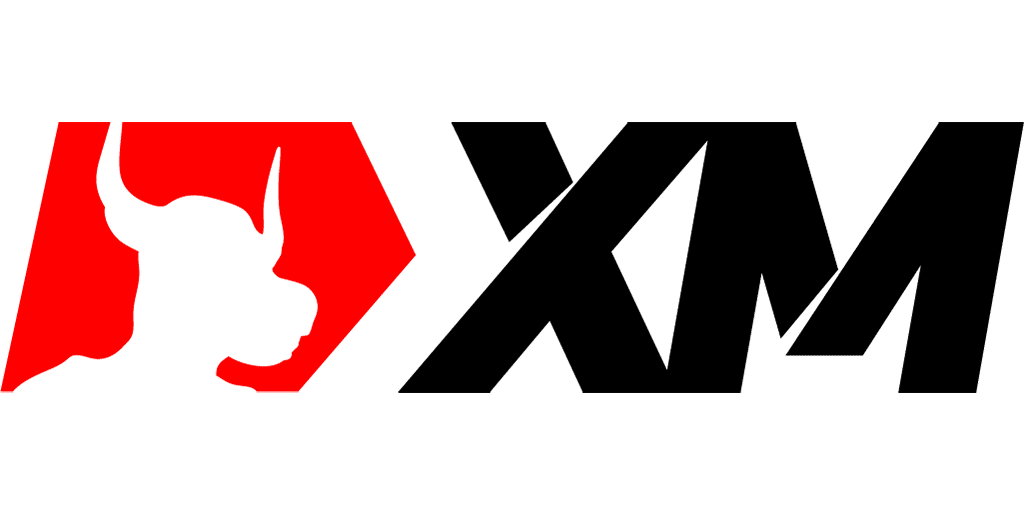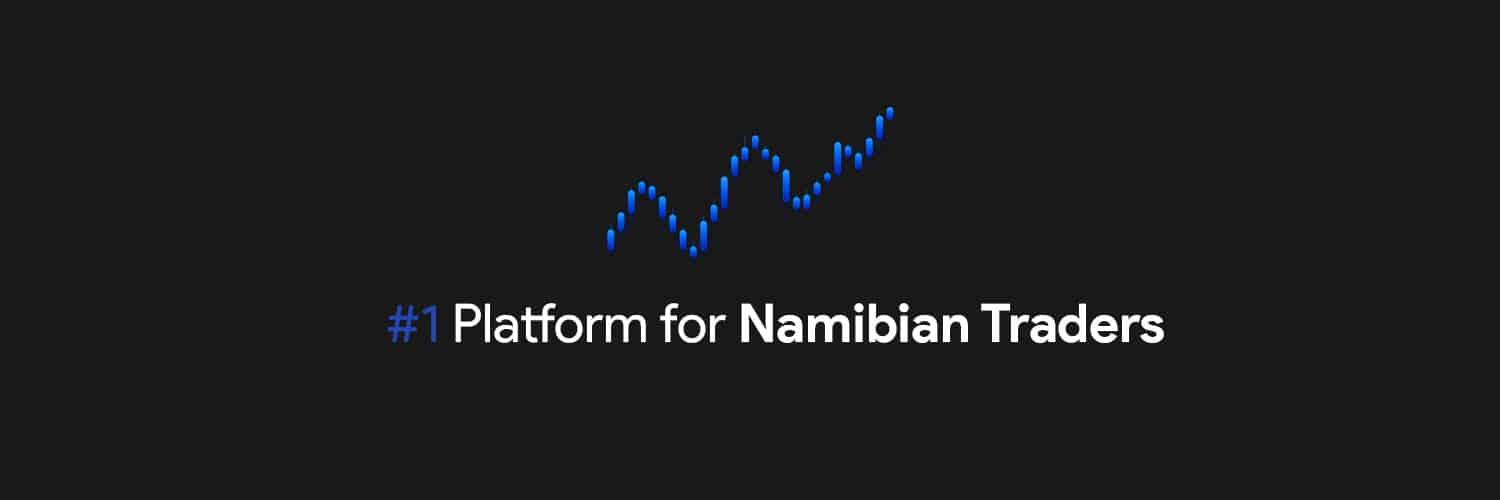
6 Best Day Trading Strategies in Namibia
The 6 Best Day Trading Strategies in Namibia revealed. We tested and verified the best day trading strategies for Namibian Traders.
This is a complete list of day trading strategies in Namibia.
In this in-depth guide you’ll learn:
- What is a day trading strategy?
- Which brokers offer day trading strategies to Namibian traders?
- Our six recommended day trading strategies for Namibian Beginner Traders?
- How to compare day trading strategies against each other?
- What are forex day trading strategy patterns in Namibia?
- What are day trading pattern rules?
- Which broker offers a low minimum deposit on Namibian Dollar Accounts?
And lots more…
So if you’re ready to go “all in” with the best day trading strategies for Namibians…
Let’s dive right in…
- Louis Schoeman
Best Trading Platforms for Day Trading in Namibia – Comparison
| 🥇 Broker | 🎉 Open An Account | ✔️ Day Trading Strategies Offered? | 💳 Minimum Deposit (₦) | 📱 Namibian Dollar-based Account? | 💰 NAD Deposits Allowed? |
| 1. Admirals | Open Account | Yes | 1 USD / 18 NAD | No | Yes |
| 2. Tickmill | Open Account | Yes | 100 USD / 1,862 NAD | No | No, only USD, GBP, EUR, IDR, CNY, VND, or RUB |
| 3. HFM | Open Account | Yes | 0 USD / 0 NAD | Yes | Yes |
What is a Day Trading Strategy?
A day trading strategy encompasses a set of rules and techniques utilized by traders to execute short-term trades within a single trading day.
The primary objective of such a strategy is to capitalize on minor price fluctuations in highly liquid financial markets like stocks, currencies, or futures contracts.
6 Best Day Trading Strategies in Namibia (2024)
1. The trend trading strategy

A trend trading strategy is a method employed in financial markets to identify and capitalize on the directional movement of prices. It is based on the observation that financial instruments, such as stocks, currencies, or commodities, often exhibit extended periods of upward or downward trends.
This strategy involves recognizing the prevailing trend in a specific market and then entering trades that align with that trend. Traders utilizing this approach seek to profit from the momentum and continuation of the trend, rather than attempting to predict short-term fluctuations or market reversals.
Various indicators and tools are used in trend trading, including moving averages, trendlines, and price patterns. These tools assist traders in identifying the direction and strength of the trend, as well as potential entry and exit points for their trades.
During a bullish (upward) trend, a trend trader typically looks for opportunities to buy or “go long” on a financial instrument, anticipating further price increases. Conversely, in a bearish (downward) trend, the trader seeks opportunities to sell or “go short,” expecting prices to continue declining.
Effective risk management is crucial in trend trading strategies, as trends can unexpectedly change or reverse. Traders often utilize stop-loss orders to limit potential losses and employ appropriate position-sizing techniques to effectively manage risk.
Overall, trend trading strategies aim to capture profits by capitalizing on market trends and can be employed across various timeframes, ranging from short-term intraday trading to longer-term positions.
2. The scalping trading strategy
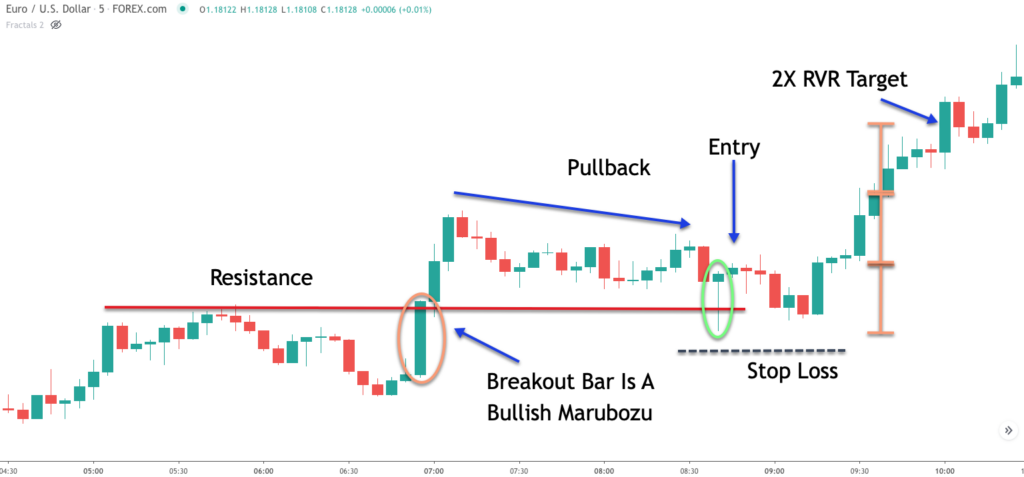
Scalping is a high-speed trading strategy where traders aim to make small profits from frequent trades.
They enter and exit positions quickly, often within seconds or minutes, taking advantage of small price fluctuations. Scalpers rely on technical indicators, order flow, and market depth to identify short-term trading opportunities.
3. The momentum trading strategy
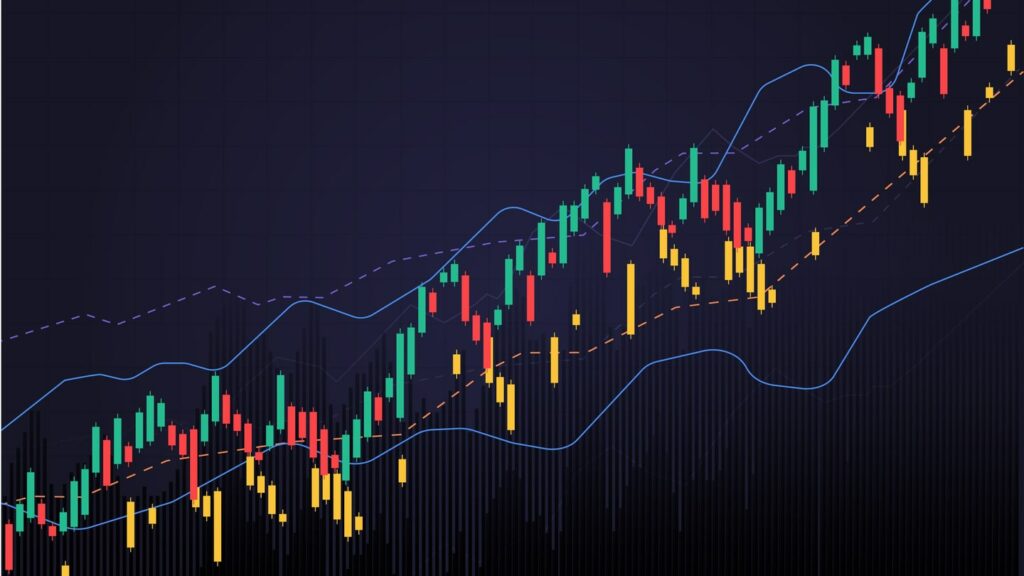
Momentum Trading focuses on stocks or other financial instruments that are experiencing significant price movements. The goal is to ride the momentum of the trend, entering trades as the price accelerates in a particular direction.
Momentum traders often use technical indicators such as moving averages or the relative strength index (RSI) to identify strong trends and make quick trading decisions.
4. The breakout trading strategy
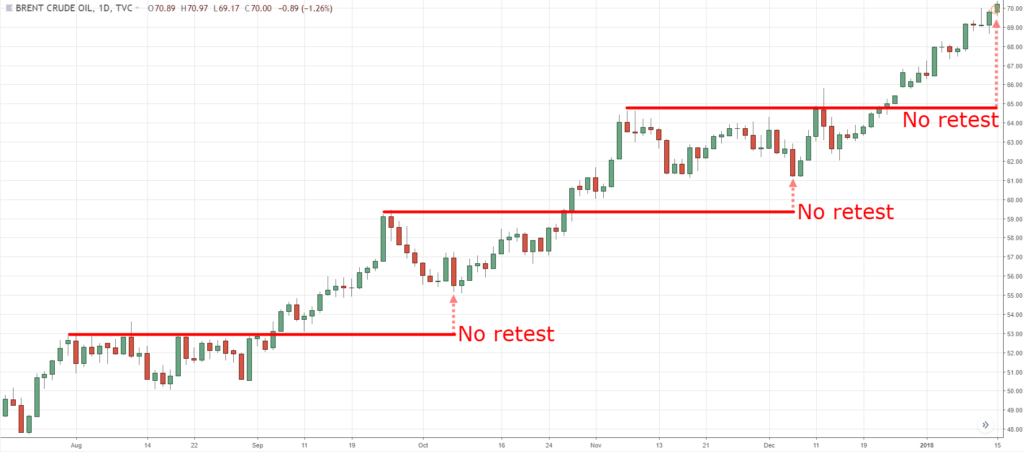
Breakout Trading involves looking for situations where the price of a financial instrument breaks through a significant support or resistance level. Traders anticipate that the breakout will lead to a substantial price movement in the same direction.
Breakout traders often use chart patterns such as triangles or rectangles, or technical indicators like Bollinger Bands or Donchian Channels to identify potential breakouts.
5. The reversal trading strategy
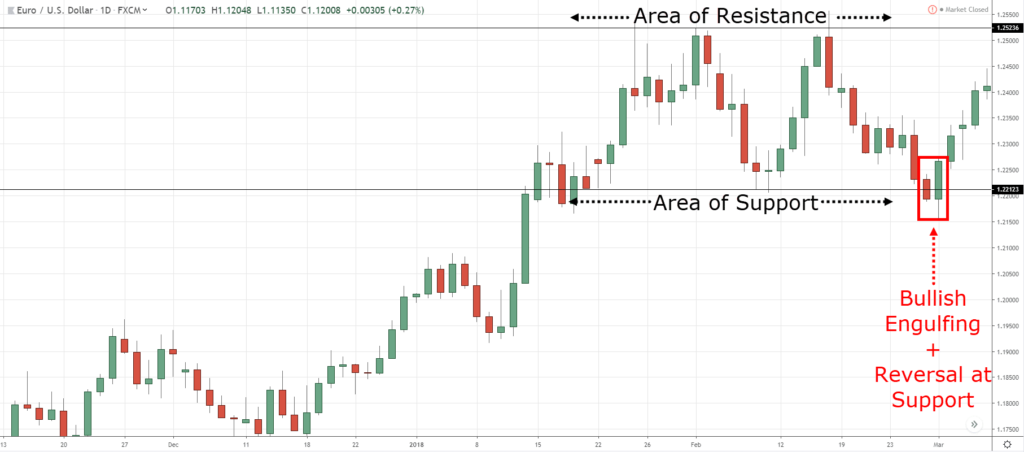
Reversal Trading aims to identify points where a trend is likely to reverse. Traders look for overbought or oversold conditions in the market, signalling a potential change in direction.
Reversal traders use various technical indicators such as oscillators like the stochastic or the relative strength index (RSI) to identify potential reversal points and enter trades accordingly.
6. The range trading strategy
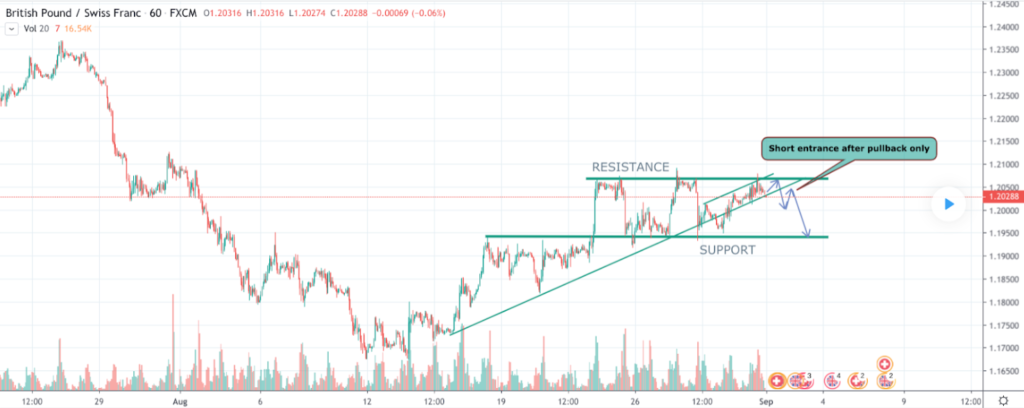
Range Trading seeks opportunities in markets that are trading within a defined range or channel. Traders identify levels of support and resistance and enter trades when the price reaches those levels.
Range traders aim to profit from price oscillations within the range, buying near support and selling near resistance. Technical indicators like the Average True Range (ATR) or Bollinger Bands can help identify suitable range-bound conditions.
Best Trading Platforms for Day Trading Strategies
1. Admirals

Day trading doesn’t require a large investment to get started, and Namibian traders may start with as little as $100 with Admirals.
Min Deposit
470 NAD / 25 USD
Regulators
FCA, ASIC, CySEC, JSC, FSCA, FSA, CMA
Trading Desk
MetaTrader 4, MetaTrader 5, Admirals Mobile App
Crypto
Total Pairs
82+
Islamic Account
No
Trading Fees
Account Activation
Admirals has 47 different currency pairings for Namibian traders to choose from. Aside from its social trading platform, the company offers a wide choice of additional trading possibilities. All-in costs for EUR/USD trades average 0.6, with the average spread being 0.06.
Admirals Overview
| Feature | Information |
| ⚖️ Regulation | FCA, ASIC, CySEC, EFSA, JSC |
| 📲 Social Media Platforms | • YouTube • Telegram |
| ⚖️ CBN Regulation? | No |
| 💻 Trading Accounts | Trade.MT5, Invest.MT5, Zero.MT5, Trade.MT4, Zero.MT4 |
| 📱 Trading Platform | MetaTrader 4, MetaTrader 5, Admirals Mobile App |
| 💵 Minimum Deposit (₦) | 1 USD / 18 NAD |
| 💳 Trading Assets | ESG Trading Instruments, Forex, Cryptocurrency CFDs, Commodities, Indices, Stocks, ETFs, Bonds, Spread Betting |
| ✔️ Namibian Dollar-based Account? | No |
| 💸 NAD Deposits Allowed? | Yes |
| 💰 Bonuses for Namibian traders? | No |
| 📊 Minimum spread | From 0.0 pips EUR/USD |
| ✔️ Demo Account | Yes |
| ☪️ Islamic Account | Yes |
| 🎉 Open An Account | Open Account |
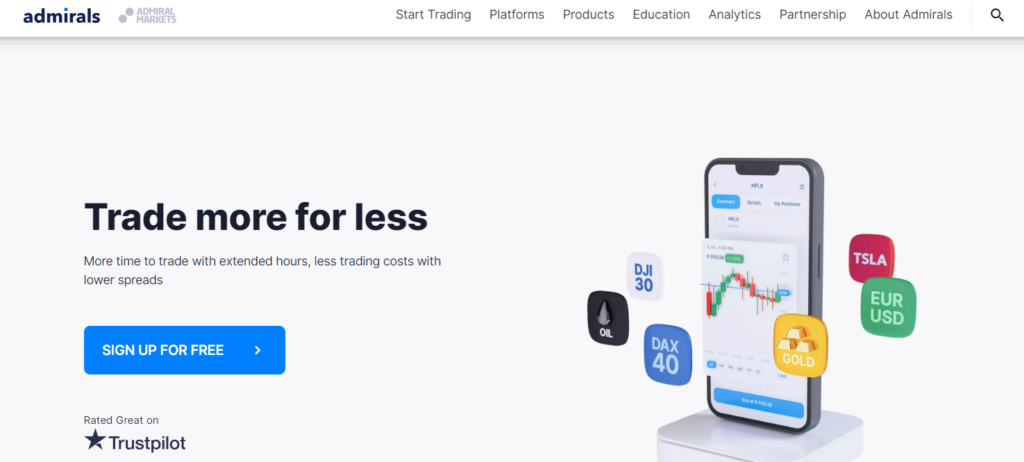
Pros and Cons
| ✔️ Pros | ❌ Cons |
| Admirals is well-regulated in several regions globally | There is an inactivity fee charged |
| Admirals offers commission-free options | Namibian traders are subject to currency conversion fees |
| The broker accepts Namibian traders despite their trading skills or trading strategies | There are deposit and withdrawal fees charged |
| There are user-friendly platforms available across devices | There are admin fees charged on the Islamic account |
| There is a wide range of tradable markets, complex instruments, and leveraged products | There is only one account type that can be converted to an Islamic Account |
| Admirals offers the MetaTrader Supreme Edition | |
| Traders are given access to premium analytics | |
| There are several educational materials, resources, and tools offered |
2. Tickmill

Despite its relative newness on the Forex markets, Tickmill has already earned a solid reputation among Namibian investors and traders alike. There are numerous tools available to you through Tickmill, including forex dray trading alternatives.
Min Deposit
USD 100
Regulators
FSA
Trading Desk
Meta Trader 4
Crypto
Yes
Total Pairs
62
Islamic Account
Yes
Trading Fees
Low
Account Activation Time
24 Hours
Third-party solutions are also supported by Tickmill’s own web platform. MetaTrader 5 users can still access their Tickmill accounts via MetaTrader 4 despite the lack of support for MetaTrader 5. ZuluTrade assistance and the platform’s own desktop program are also included for Namibian traders.
Tickmill Overview
| Feature | Information |
| ⚖️ Regulation | Seychelles FSA, FCA, CySEC, Labuan FSA, FSCA |
| 📲 Social Media Platforms | • Facebook • YouTube • Telegram |
| ⚖️ CBN Regulation? | No |
| 💻 Trading Accounts | Pro Account, Classic Account, VIP Account |
| 📱 Trading Platform | MT4, MT5, Tickmill Mobile |
| 💳 Minimum Deposit (₦) | 100 USD / 1,862 NAD |
| 💵 Trading Assets | Forex, Stock Indices, Energies, Precious Metals, Bonds, Cryptocurrencies |
| 📱 Namibian Dollar-based Account? | No |
| ✔️ NAD Deposits Allowed? | No, only USD, GBP, EUR, IDR, CNY, VND, or RUB |
| 💸 Bonuses for Namibian traders? | Yes |
| 📊 Minimum spread | 0.8 pips |
| 💻 Demo Account | Yes |
| ☪️ Islamic Account | Yes |
| 🎉 Open An Account | Open Account |
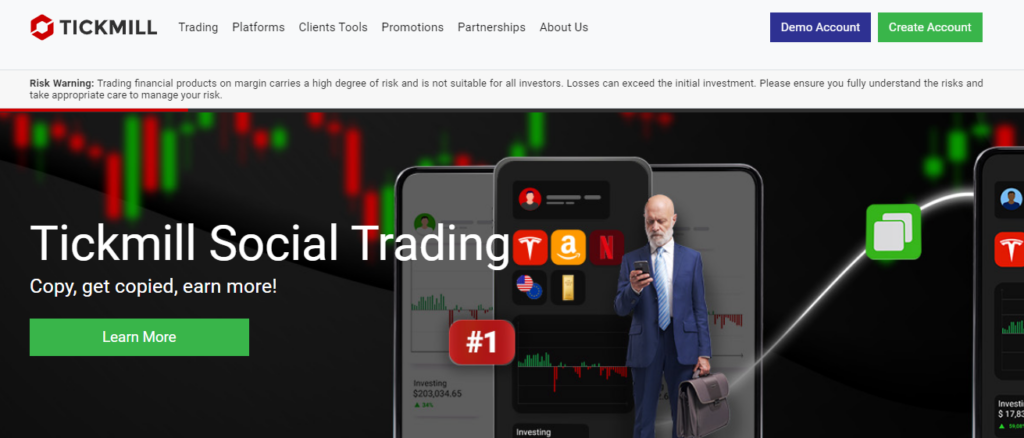
Pros and Cons
| ✔️ Pros | ❌ Cons |
| Tickmill offers robust trading platforms and innovative mobile trading | Currency conversion fees will apply for Dollar deposits |
| Tickmill has a very high trust score and is known for its competitive trading conditions | There are no fixed spread accounts offered |
| There are several convenient funding options available including Skrill, Neteller, and others | The spreads are not the tightest |
| Advanced traders can use a range of tools including FIX API, AutoChartist, VPS, and others |
3. HFM

HFM offers four different trading accounts to Namibian traders. Additionally, there is a 1:1000 leverage and the possibility to activate a bonus for trading. A wide selection of trading choices and excellent customer service are provided by HFM for Namibian traders.
Min Deposit
0 USD / 0 NAD
Regulators
FSCA, CySEC, DFSA, FSA, FCA, FSC, CMA
Trading Desk
MetaTrader 4, MetaTrader 5, HF App
Crypto
No
Total Pairs
50+
Islamic Account
Trading Fees
Account Activation
HFM Overview
| Feature | Value |
| 💰 Minimum Deposit | 0 USD / 0 NAD |
| 💵 Maximum Deposit | Unlimited |
| 💳 Account Base Currencies | USD, ZAR, NGN |
| 📊 Max Leverage Ratio | 1:1000 |
| ✔️ Dollar Deposits Allowed? | Yes |
| 💸 Offers a DollarAccount? | Yes |
| 📞 Namibian Customer Support? | Yes |
| 💻 Account Types | Cent, Zero, Premium, and Pro |
| 📱 Trading Assets | Forex, Precious Metals, Energies, Indices, Shares, Commodities, Cryptocurrencies, Bonds, Stocks DMA, ETFs |
| ✔️ Negative Balance Protection? | Yes |
| 💰 Margin Call | Between 40% to 50% |
| 🛑 Stop-Out | Between 10% to 20% |
| 📉 Minimum Trade Size | 0.01 lots |
| 🎉 Open An Account | Open Account |
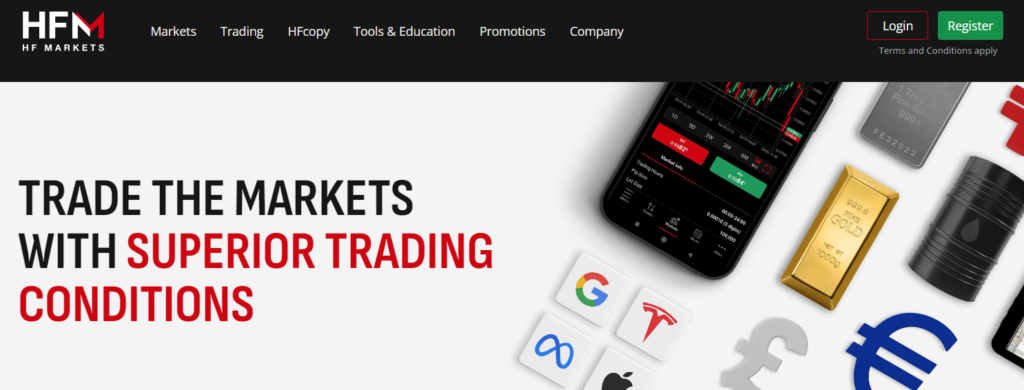
Pros and Cons
| ✔️ Pros | ❌ Cons |
| There are tight, competitive spreads from 0.0 pips on EUR/USD | HFM only offers a few deposit and withdrawal methods to Namibian |
| There is a demo account for beginners who are learning to trade and professional traders who are testing strategies | |
| Namibian traders can register a trading account in either USD, ZAR, or NAD | |
| Several asset classes can be traded through HFM | |
| Namibian traders have access to MetaTrader 4 and 5 across desktops, mobile apps, and web-based platforms |
Things to consider when day trading
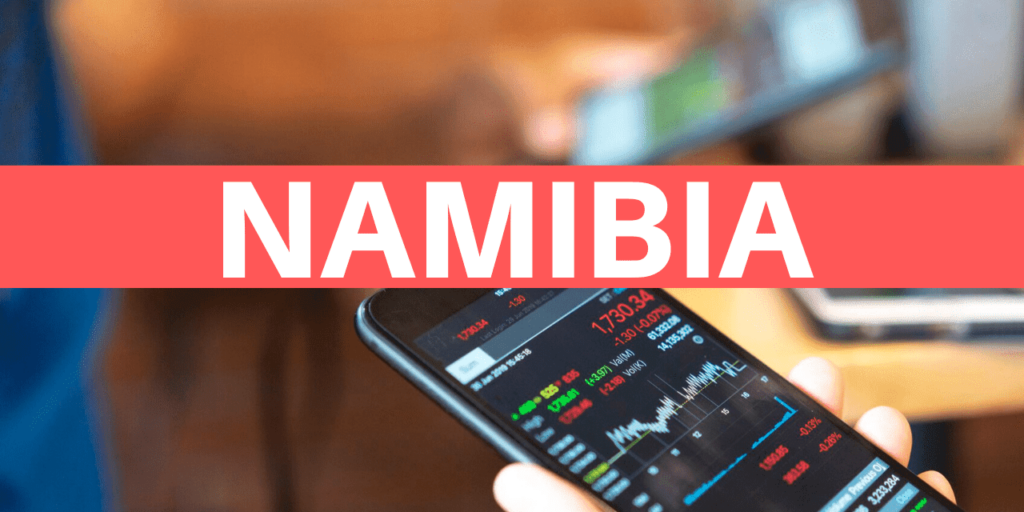
When day trading, there are several important factors to consider to increase your chances of success. Here are some key considerations:










Remember that day trading involves inherent risks, and there are no guarantees of profits. It requires practice, experience, and a realistic understanding of the markets. Regularly assess and refine your trading approach based on your own performance and feedback from the market.
Understanding the day trader

To understand day traders, it is important to recognize their characteristics, motivations, and typical behaviours. Here are some key aspects to consider:










It is important to note that day trading carries inherent risks, and not all individuals who attempt day trading achieve consistent profitability. Success in day trading requires a combination of knowledge, experience, discipline, and adaptability to changing market conditions.
How to start out with day trading

If you are interested in starting out with day trading, here are some steps to help you begin:











Remember that day trading involves risks, and losses are a possibility. Start with a cautious and systematic approach, focusing on learning and building experience over time. Be patient, disciplined, and adaptable as you navigate the complexities of day trading.
How to Choose a Forex Broker
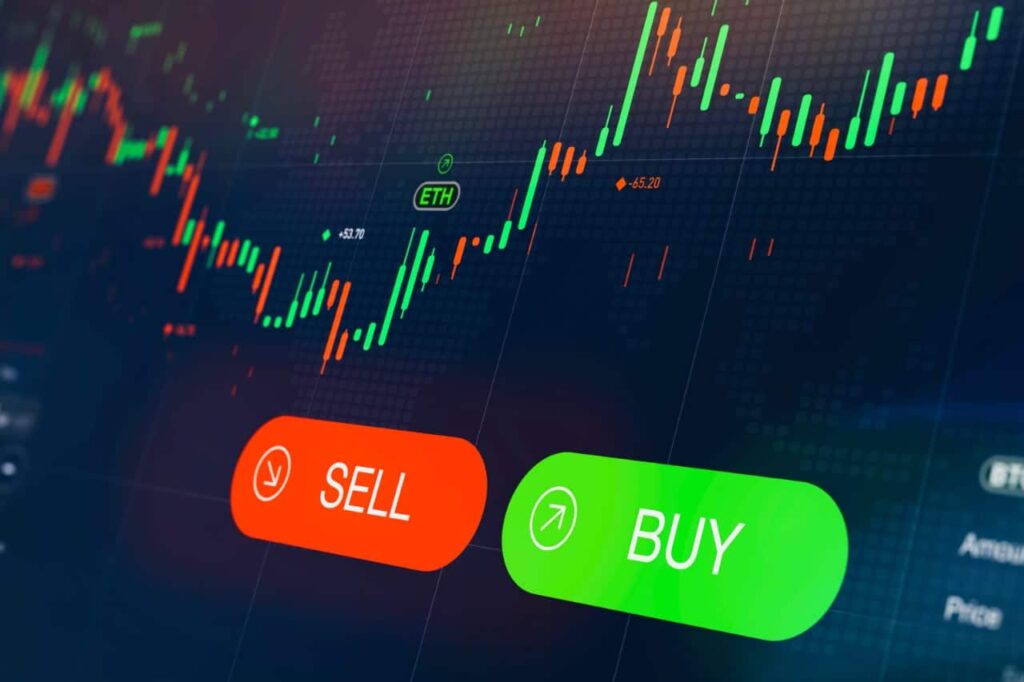
When it comes to selecting a forex broker, it is essential to take into account several crucial factors to ensure that you choose a provider that is reputable and suitable for your needs. Let’s explore these factors in detail:
Regulation and Trustworthiness:
Give priority to brokers regulated by reputable financial authorities. Regulations are in place to ensure that brokers adhere to specific standards and protect client funds.
It is important to research the regulatory bodies in your country and verify whether the broker is registered and compliant with their regulations.
Security of Funds:
Look for brokers that keep client funds separate from their operational funds. This segregation provides protection for your money in case the broker faces insolvency. Additionally, check if the broker offers account protection through investor compensation schemes.
Trading Platform and Tools:
Evaluate the broker’s trading platform, as it is where you will execute trades and manage your account. Make sure the platform is user-friendly, and stable, and offers essential features such as real-time charts, technical analysis tools, and order execution capabilities.
Consider whether the platform is available on desktop, web, and mobile devices for convenient access.
Product Offering:
Assess the range of currency pairs and other financial instruments available for trading. Ensure that the broker offers the specific currency pairs you are interested in, as well as any other instruments you may wish to trade, such as commodities or indices.
Execution and Spreads:
Understand the broker’s execution model and determine whether they offer market execution or use a dealing desk. Market execution typically provides faster order execution, while a dealing desk may involve potential conflicts of interest.
Additionally, compare the spreads (the difference between the buy and sell prices) offered by different brokers to find competitive rates.
Fees and Commissions:
Take into consideration the fees charged by the broker, including spreads, commissions, overnight financing charges, and any other transaction costs.
Evaluate the fee structure and compare it with other brokers to ensure that it aligns with your trading style and frequency.
Account Types and Minimum Deposit:
Review the various account types offered by the broker and the corresponding minimum deposit requirements. Choose an account type that suits your trading needs and financial capabilities.
Some brokers may also provide demo accounts for practice trading before committing real funds.
Customer Support:
Assess the quality of the broker’s customer support services, as you may require assistance with technical issues or account-related queries.
Check the availability and responsiveness of customer support channels such as phone, email, live chat, or online support tickets.
Educational Resources:
Consider whether the broker offers educational materials, webinars, or trading guides to support your learning and development as a forex trader.
Brokers that provide educational resources can be particularly beneficial, especially for beginners.
Reputation and Reviews:
Conduct thorough research on the broker’s reputation by reading reviews from other traders. Look for feedback on factors such as customer service, order execution, withdrawal process, and overall trading experience.
It is advisable to consider multiple sources of information to form a balanced assessment.
Deposit and Withdrawal Options:
Check the deposit and withdrawal methods offered by the broker. Ensure that there are convenient and secure options available that align with your preferences. Additionally, consider any associated fees or processing times.
Additional Features:
Evaluate any additional features or tools provided by the broker, such as social trading platforms, copy trading functionality, or trading signals. These features can enhance your trading experience and provide opportunities for learning and collaboration.
By considering these factors, you can make an informed decision when selecting a forex broker that meets your trading requirements and provides a secure and reliable trading environment.
The Best Forex Brokers in Namibia
In this comprehensive analysis, we have listed the best Forex brokers or Namibia day traders. Of these brokers, we have further identified the forex brokers that offer additional services and solutions to Namibian traders.
Best Forex Broker for beginner day traders in Namibia
Min Deposit
470 NAD / 25 USD
Regulators
FCA, ASIC, CySEC, JSC, FSCA, FSA, CMA
Trading Desk
MetaTrader 4, MetaTrader 5, Admirals Mobile App
Crypto
Total Pairs
82+
Islamic Account
No
Trading Fees
Account Activation
Overall, Admirals is considered a low-risk broker and can be summarised as a trustworthy and reliable ECN broker for day trading in Namibia. Regarding spread and security, Admirals guarantees fast trading speeds from a few milliseconds when day trading in Namibia. In terms of users, Admirals has over 7 million registered traders.
Best Forex broker with NAD-based accounts for Namibian day traders
Min Deposit
0 USD / 0 NAD
Regulators
FSCA, CySEC, DFSA, FSA, FCA, FSC, CMA
Trading Desk
MetaTrader 4, MetaTrader 5, HF App
Crypto
No
Total Pairs
50+
Islamic Account
Trading Fees
Account Activation
Overall, HFM is considered a low-risk broker and can be summarised as a trustworthy and reliable ECN broker for day trading in Namibia. Regarding spread and security, HFM guarantees fast trading speeds from a few milliseconds when day trading in Namibia. In terms of users, HFM has over 2.5 million registered clients around the world.
Best MT4 Forex broker for Namibia day traders
Min Deposit
USD 100
Regulators
FSA
Trading Desk
Meta Trader 4
Crypto
Yes
Total Pairs
62
Islamic Account
Yes
Trading Fees
Low
Account Activation Time
24 Hours
Overall, Tickmill is considered a low-risk broker and can be summarised as a trustworthy and reliable ECN broker for day trading in Namibia. Regarding spread and security, Tickmill guarantees fast trading speeds from a few milliseconds when day trading in Namibia. In terms of users, Tickmill has over 38,000 registered clients in the UK.
Best MetaTrader 5 / MT5 Forex Broker in Namibia
Min Deposit
Depending on the payment system, typically, low
Regulators
CBCS, CySEC, FCA, FSA, FSC, FSCA, CMA
Trading Desk
MetaTrader 4, MetaTrader 5, Exness App, Exness Terminal
Crypto
Total Pairs
107
Islamic Account
Trading Fees
Account Activation
Overall, Exness is the best MetaTrader 5 forex broker in Namibia. Traders can open an account with Exness and utilize MetaTrader 5 for trading. In addition, Namibians have access to MT5’s different tools and services, such as technical indicators and customizable charts.
Best Forex Broker for Beginners in Namibia
Min Deposit
5 USD / 95 NAD
Regulators
FSCA, IFSC, ASIC, CySEC, DFSA, FCA
Trading Desk
MT4, MT5, XM Mobile App
Total Pairs
57
Islamic Account
Trading Fees
No (Just spread)
Account Activation
Overall, XM is the best forex broker for beginners in Namibia. In addition, XM provides Namibians with an interactive example account and teaching materials.
Conclusion
In Conclusion the top 6 Best Day Trading Strategies are Trend Trading, Scalping, Momentum Trading, Breakout Trading, Reversal Trading and Range Trading.
Each strategy comes with its own set of principles and methodologies, providing traders with options that align with their risk tolerance, preferred timeframes, and market conditions.
you might also like: HFM Review
you might also like: Tickmill Review
you might also like: Best MT5 Brokers
you might also like: Best Micro Account Forex Brokers
you might also like: Best Forex Brokers
Frequently Asked Questions
What is day trading in Forex?
Buying and selling currencies on the foreign exchange market in a single trading day is the basis of this popular strategy.
Positions are closed at the end of each day and new ones are opened the next. Forex day traders purchase and sell currency pairs numerous times a day to take advantage of modest market fluctuations.
What is the difference between day trading and Forex trading?
Day trading forms part of Forex trading and is a popular technique that allows traders to focus on volatility in a single day. General Forex traders look at long-term positions and hold them for several days or even weeks.
Does Forex allow day trading?
Yes, the Forex markets allow for various trading strategies, of which day trading is one. It is important, however, that day traders find brokers who provide a good environment for holding short-term positions.
Which type of trading is most profitable?
Any type of trading can be profitable, as long as traders ensure they have enough market knowledge, use a disciplined approach, adopt a sound trading strategy, and sign up with a reputable broker offering them competitive trading conditions.
What is the most successful Forex Day strategy?
Different strategies will work for different traders, and it is crucial that traders of any strategy take the time for back-testing or practice in a demo account. The best day trading strategies for beginners are considered to be the following:





Table of Contents







 Scam Forex Brokers in Namibia
Scam Forex Brokers in Namibia The trend trading strategy
The trend trading strategy 



